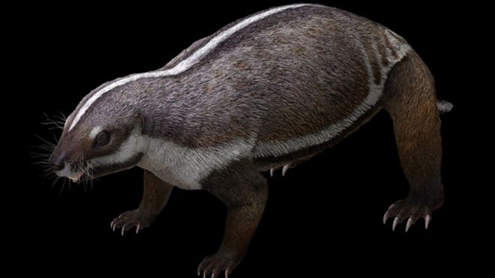Adalatherium hui – “Crazy Beast” from Madagascar
Scientists have published a scientific paper in the academic journal “Nature” that describes a cat-sized mammal that lived alongside the dinosaurs at the very end of the Cretaceous. The furry little creature has been named Adalatherium hui and its fossils have been found on the island of Madagascar.
Madagascar started to break away from the super-continent of Gondwana around 88 million years ago and so animals such as Adalatherium evolved in relative isolation, separated from other populations of mammals on larger landmasses. At around three kilograms in weight and not being fully grown when it died, it challenges the perception that all mammals were very small during the time of the dinosaurs.
A Life Reconstruction of the Late Cretaceous Mammaliaform Adalatherium hui
Picture credit: Reuters
“Crazy Beast”
Adalatherium lived around 72 million to 66 million years ago (Late Cretaceous). The genus name translated from the Greek and native Malagasy means “crazy beast”, as the discovery of skull and postcranial fossil material of this badger-like creature challenges a lot of scientific assumptions about the evolution of mammals during the latter stages of the Mesozoic.
The snout had a large congregation of nerves within it, making the nose of this animal extremely sensitive. This suggests that sense of smell was very important and therefore, it has been proposed that Adalatherium lived underground, that it was a burrowing animal (fossorial – an animal adapted to digging and living in burrows).
Adalatherium shared its island home with a number of predatory dinosaurs, including abelisaurids, dromaeosaurs and noasaurids as well as at least three species of crocodilians, both ancient forms and distant relatives of today’s living crocodiles (Neosuchian crocodilians).
Perhaps living underground was a very sensible strategy when surrounded by large predators.
Teaching Extensions Associated with Adalatherium
- Make a list of animals alive today that live in burrows
- What similarities do they have? What differences can you spot?
- Can you design a dinosaur that could live underground? What sort of adaptations would this animal have?
For further information about educational resources: Email Everything Dinosaur.


